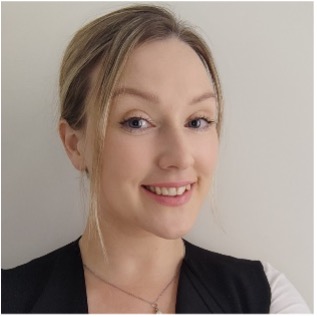Laurea tutkii käytettyjen vaatteiden markkinaa
Laurea-ammattikorkeakoulu toimii Etelä-Suomessa Uudellamaalla, kaikkiaan kuudella kampuksella. Yliopistossa on noin 9 900 opiskelijaa, 660 henkilökunnan jäsentä ja verkosto sisältää 34 700 alumnia. Opetusohjelmat kattavat sekä kandidaatin että maisterin tutkintoja liikkeenjohdon, sosiaalipalveluiden, terveydenhuollon sekä ravintola-alan johdon alueilla. Laurean tutkimusohjelmat koskevat useita kiinnostavia teemoja, mukaan lukien palveluliiketoiminta ja kiertotalous. Tämä artikkeli keskittyy kiertotalouteen; käytettyihin tekstiilituotteisiin sekä tutkimusyhteistyöhön Crowstin kanssa.
Baltic2Hand Projekti – Käytetyt vaatteet ja tekstiilit
Laurea on mukana kansainvälisessä Baltic2Hand-hankkeessa, jonka tavoitteena on tehostaa käytettyjen tekstiilien ja vaatteiden markkinaa ja liiketoimintaa Itämeren alueella. Hanke keskittyy tekstiilien uudelleenkäytettävyyden parantamiseen ja tekstiilijätteen vähentämiseen Virossa, Suomessa, Latviassa ja Ruotsissa. Hanke sisältää kansainvälisiä tutkimusohjelmia, ja tässä artikkelissa keskitymme Suomessa toteutettuihin laadullisiin kuluttajahaastatteluihin.
”Olemme innoissamme tästä hankkeesta, sillä siihen liittyy useita mielenkiintoisia, arvokkaita ja toisiinsa liittyviä kokonaisuuksia”, sanoo Laurean tohtoriopiskelija ja projektiassistentti Veera Joro. ”Laajana viitekehyksenä on ympäristönäkökulma ja ekologinen kestävyys. Käytettyjen vaatteiden markkina edustaa myös huomattavaa mahdollisuutta liiketoiminnalle. Ja henkilökohtaisella tasolla; mikä olisi intiimimpi tapa ilmaista omia arvoja ja persoonallisuutta kuin yllä olevat vaatteet?”, Joro jatkaa.
Tässä ohjelmassa yhdistyvät siis makrotason pyrkimys tukea kestävää kehitystä, tehostaa liiketoimintaa, ja ottaa myös henkilötasolla kantaa asioihin joilla on merkitystä.
Kuluttajien ajatuksia kartoittamassa
Ymmärtääkseen aitoa kuluttajakäyttäytymistä, ostokriteerejä sekä ostamiseen liittyviä triggereitä Laurea aloitti tutkimusyhteistyön Crowstin kanssa. Tarkkaan määriteltyyn haastateltavien profiilini pohjautuen toteutettiin 20 henkilökohtaista syvähaastattelua. Haastattelut kestivät 40-60 minuuttia ja haastateltavien joukossa oli niin naisia, miehiä kuin myös ei-binääristä sukupuolta edustavia henkilöitä.
”Halusimme, että sessiot olisivat vapaamuotoisia, temaattisia keskusteluja. Narratiivinen haastattelumetodi mahdollisti rennon sekä aidon, emotionaalisesti läsnä olevan ilmapiirin”, Joro kommentoi. ”Crowst teki loistavaa työtä; he saivat haastateltavat aidosti tuntemaan, että he juttelevat ystävän kanssa ikään kuin kahvikupin äärellä. Tämä on huipputärkeää, jotta päästään ihmisten mieleen, ymmärtämään heidän emotionaalisia motiivejaan vaateostoksiin liittyen”, Joro korostaa.

”Crowst teki loistavaa työtä; he saivat haastateltavat aidosti tuntemaan, että he juttelevat ystävän kanssa ikään kuin kahvikupin äärellä. Tämä on huipputärkeää, jotta päästään ihmisten mieleen, ymmärtämään heidän emotionaalisia motiivejaan vaateostoksiin liittyen.”
Veera Joro, tohtoriopiskelija ja projektiassistentti, Laurea
Haastateltavat seulottiin ja valittiin kolmen pääasiallisen käyttäytymismallin perusteella;
- Ihmiset, jotka ostavat lähes ainoastaan uusia vaatteita
- Ihmiset, jotka ostavat osan vaatteista käytettynä, mutta niiden osuus on alle 30 % vaatteiden kokonaisostoksista
- Ihmiset, jotka ostavat pääasiassa käytettyjä vaatteita / tekstiilituotteita
Tutkimusprojektin keskeisenä tavoitteena oli ymmärtää kuluttajien päätöksentekoon, ostamiseen, sekä ostamisen esteisiin liittyviä tekijöitä. Tuotettu tieto ja ymmärrys tukee Laurean palvelumuotoilun ammattilaisten työtä käytettyjen vaatteiden digitaalisten palveluiden suunnittelussa. Mitä etuja ja hyötynäkökulmia tulisi korostaa? Miten taas hälvennetään huolenaiheita? Tutkimuksen avulla saatu tieto antaa palvelumuotoilijoille paremman lähtökohdan tehdä tuloksellista työtä.
Laadulliset haastattelut ja laadukas tieto
Laadullinen tutkimusmetodi keskittyy syiden, motiivien, pinnan alla piilevien asenteiden ja vaikuttimien kartoittamiseen.
”Tämä on todella hauskaa ja jännittävää, on ollut koko prosessin ajan. Huippukiinnostava aihe, loistava toteutus, ja inspiroivat löydökset joita alamme työstää eteenpäin. Olemme oikealla polulla, ja haluamme saavuttaa jotain suurta!”, Joro hymyilee.
Baltic2Hand on Interreg Central Baltic Program 2021-2027 -hanke, joka on Euroopan unionin osarahoittama.

Oletko kiinnostunut laadullisesta tutkimustiedosta osana konseptisi, tuotteesi (NPD) tai palvelusi luomisprosessia? Syvähaastattelut, virtuaalisesti Teamsissa tai kasvotusten, saattaa olla vahva ja sopiva lähestymistapa. Ota yhteyttä, jutellaan.